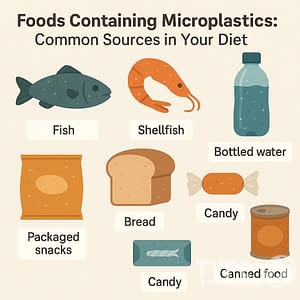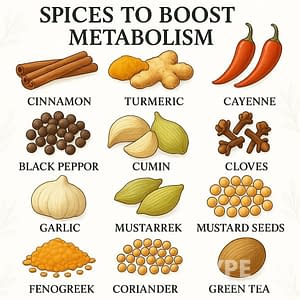Monk fasting, sometimes called a 36-hour fast, means you stick to non-caloric drinks like water, black coffee, and unsweetened tea for a full day and a half. The monk fast can help with weight loss, gut health, and might lower your risk of issues like heart disease by giving your digestive system a solid break once a week.
Most people start after dinner one day and don’t eat again until breakfast the day after next. It’s a pretty straightforward schedule, but not always easy.

This approach stands out from other intermittent fasting routines because of its length and the kinds of benefits people report. Oddly enough, it’s become popular since you only need to do it once a week, which is manageable for busy folks.
Popular posts:
During a monk fast, your body flips the switch to burn stored fat for energy. This shift can boost your metabolism and give your eating habits a kind of reset.
Key Takeaways
- A monk fast means only zero-calorie drinks for 36 hours straight, usually just once a week.
- Potential benefits include weight management, gut health, and maybe even some cellular renewal while you’re fasting.
- To prep, try easing into fewer meals and make sure you stay hydrated the whole time.
Origins and History of Monk Fasting

Fasting goes way back—it’s been part of religious life for thousands of years. Religious groups all over the world have used food restriction as a way to seek spiritual growth and discipline.
Monastic Traditions Around the World
Buddhist monks, for example, don’t eat after midday, a practice said to trace back to the Buddha. This helps them keep their focus on meditation instead of hunger.
Christian monasticism made fasting official in the 4th century, when St. Benedict set out his Rule and created structured fasting periods throughout the church year.
Hindu ascetics have their own ways, from total abstinence to just skipping certain foods. Jain monks can go even further, sometimes not eating at all for days.
Islamic Sufis developed unique fasting methods outside of Ramadan, using hunger as a tool for spiritual insight. No matter the tradition, there’s a shared idea that physical deprivation brings spiritual clarity.
Evolution of Fasting Practices
Early Christian desert monks sometimes ate just once every few days. Over the centuries, these practices became more structured.
Medieval monasteries had monks fasting for over half the year, with periods like Lent calling for stricter routines. In the 17th century, Bavarian monks started brewing nutrient-rich beers to keep themselves going during fasts, which led to doppelbock beer—a quirky bit of fasting history. Some monks relied on this liquid sustenance during Lenten fasts.
Eastern Orthodox fasting developed into a complex system, with different levels of abstinence depending on the calendar. Even now, many monasteries try to balance old traditions with what we know about nutrition today.
Role of Fasting in Asceticism
Asceticism treats the body’s cravings as distractions from spiritual goals. Monks use food abstinence to show they can control their physical urges.
Fasting purifies the body, disciplines the mind, and humbles the spirit. Monastic texts often describe hunger as a kind of teacher, reminding you that you depend on something greater than food.
The search for spiritual enlightenment through fasting pops up in all sorts of faiths. When you fast like a monk, you’re joining a tradition that’s spanned centuries and continents.
Types of Monk Fasting Methods
Monastic fasting comes in all shapes and sizes, depending on the tradition and community. Over time, these methods have been tweaked to support both spiritual goals and physical health.
Intermittent Fasting in Monastic Life
Many monks use a kind of intermittent fasting that’s not so different from what’s trendy now. In Buddhist monasteries, the last meal usually happens before noon, so monks fast until the next morning—creating a natural 16-18 hour window without food.
Christian monks often stick to set eating times during the day, like the Benedictines, who might eat during a 12-hour window and fast the other 12 hours. These patterns help build discipline and match up with natural sleep cycles.
Some Orthodox monks go for a 16:8 schedule, eating all their meals within eight hours. It’s a mix of ascetic tradition and practical health.
Complete Abstinence Periods
Some fasting routines are more intense, with no food at all for a set time. The Monk Fast is a modern take on this—36 hours of just water.
In certain faiths, monks might fast for three to seven days during important observances. These longer fasts are supposed to deepen spiritual awareness and discipline.
Tibetan Buddhists sometimes practice nyungne, which means no food or water for 24 hours. It’s a tough practice, usually done with guidance.
During these fasts, monks focus on prayer and meditation, using the discomfort as a way to grow spiritually. Hunger becomes a lesson instead of just a challenge.
Seasonal and Ritual Fasting
Some fasts line up with the seasons or religious holidays. Christian monks observe Lent with 40 days of modified fasting, cutting out foods like meat, dairy, or oil.
Buddhist monks in some traditions fast more strictly during seasonal changes or full moons. These routines help create structure in monastic life.
Ritual fasts sometimes come before big ceremonies or milestones. You might fast before taking vows or marking an important religious event.
Lots of monastic traditions tweak their diets with the seasons instead of going without food completely. In winter, they might eat more warming foods, while summer brings lighter meals. It’s all about keeping things balanced.
Dietary Guidelines During Monk Fasting
The monk fast has some pretty clear dietary rules, though they differ a bit depending on the tradition. For the 36-hour fast, you stick to water and other zero-calorie drinks—no food allowed.
Vegetarianism in Monasteries
Many monks lean toward vegetarianism as part of their fasting lifestyle. In Buddhist monasteries, a plant-based diet is the norm even when they’re not fasting. The idea is to avoid harming living beings.
When you’re not in a 36-hour monk fast, focus on whole, unprocessed plant foods. Veggies, fruits, legumes, nuts, and seeds are the staples. These foods pack in essential nutrients and fit with monastic values.
Some monasteries eat only before noon, which helps keep up the discipline and lines up with the body’s natural rhythms.
Use of Dairy Products
Dairy rules aren’t the same everywhere. Western monasteries, especially Benedictine ones, might allow some dairy outside strict fasting days.
During the monk fast itself, skip all dairy. But when you’re back to eating, some places allow things like:
- Plain yogurt
- A little cheese
- Small amounts of milk
Eastern Orthodox monasteries usually cut out dairy more strictly, especially during long fasts. If you’re fasting for health and not religious reasons, you can decide what works for your diet outside the fasting window.
Alcohol and Other Prohibitions
Alcohol’s off the table during monk fasting. While a few traditions have made or used alcohol in moderation, most monk fasting protocols ban it during the fast.
Other things to skip include:
- All solid foods (no calories at all)
- Sweetened drinks (sometimes even artificial sweeteners)
- Chewing gum (it can trigger digestion)
Stick to plain water, black coffee, and unsweetened tea during your 36-hour fast. These keep you hydrated without breaking the fast. Some folks add electrolytes to avoid mineral loss, but that’s more of a modern tweak than a traditional rule.
Physical and Mental Health Effects
Monk fasting brings about noticeable changes in both body and mind during those 36 hours without food. Your metabolism shifts gears, and it can even have effects on heart health that might stick with you after the fast ends.
Impact on Metabolism
When you start monk fasting, your body shifts gears after it burns through its glucose stores. At that point, you enter ketosis, which means your body starts burning fat for fuel instead of carbs.
This metabolic state offers some interesting benefits:
- More fat burning and possible weight loss
- Better insulin sensitivity
- Lower inflammation markers
- Cellular repair processes (autophagy) kick in
Your digestive system also gets a break. This pause from constant eating lets your gut recover and can help your digestion overall.
Some research hints that intermittent fasting styles like monk fasting might even boost your mental clarity. Quite a few people say they notice sharper focus and clearer thinking during a fast.
Cholesterol and Cardiovascular Health
Monk fasting seems to have a good effect on your heart and blood vessels. Studies show fasting can lower LDL (bad) cholesterol and sometimes increase HDL (good) cholesterol.
Your
- Less inflammation in your blood vessels
- Improved insulin sensitivity helps your blood vessels work better
- Oxidative stress on your arteries gets reduced
All these changes could lower your risk of heart disease if you stick with monk fasting. Some research even suggests intermittent fasting supports heart health by improving these markers.
Regular fasting can also help your body handle stress better, which shows up as improved heart rate variability—a pretty solid sign of cardiovascular health.
Longevity, Aging, and Autophagy
Fasting sets off some powerful cellular processes that slow aging and might even stretch out your lifespan. These benefits seem to come from your cells’ cleaning systems, which switch on when you stop eating for a while.
Aging Process and Life Extension
Aging basically means your cells get damaged and work less efficiently over time. If you fast for 36 hours, like in the Monk Fast, you activate longevity pathways that help slow this down.
Between 24 and 36 hours without food, your body enters what some call the “Longevity Zone.” Here, your growth hormone levels rise a lot, which helps keep muscle and cut down fat.
Periodic fasting can shift several markers tied to aging:
- Less inflammation in your body
- Lower oxidative stress that harms cells
- Better insulin sensitivity for your metabolism
- Stronger stress resistance at the cellular level
Research indicates that regular fasting can affect how your cells age and might give you a shot at a longer, healthier life.
Role of Autophagy in Fasting
Autophagy (literally “self-eating”) is your body’s way of cleaning house at the cellular level. It gets rid of damaged parts and recycles them for energy or building blocks.
Once you hit 36 hours of fasting, autophagy ramps up. Yoshinori Ohsumi, a Japanese scientist, even won a Nobel Prize in 2016 for figuring this out—it’s now seen as key for longevity.
During autophagy, your cells:
- Spot damaged proteins and organelles
- Wrap them up in special membranes
- Break them down and reuse the parts
This process keeps your cells from building up “junk” that leads to aging and disease. By the 36-hour mark of a Monk Fast, you’ve usually reached peak autophagy.
Some recent studies show fasting turns on autophagy genes like LAMP2, LC3B, and ATG5, which help guard against chronic diseases and the wear and tear of aging.
Spiritual Discipline and Personal Development
Fasting can transform your spiritual journey and personal growth if you practice it with intention. It bridges ancient traditions and today’s self-improvement trends, teaching some surprisingly practical life skills.
Building Self-Control Through Fasting
Fasting is a pretty direct way to build self-discipline. When you choose to go without something—even just food—for a while, you’re working out your willpower.
Monks have used fasting for centuries to get a handle on their physical urges. By skipping meals for a bit, you learn to keep other impulses in check too.
Lots of people notice better decision-making after they start fasting regularly. Saying “no” gets easier, and that discipline spills over into work, relationships, and habits.
If you’re new to fasting, start small—try 12 to 16 hours. It’s much easier to stick with and won’t throw your system for a loop.
Mindfulness and Meditation Practices
Fasting naturally brings mindfulness into the picture. When you’re not eating, there’s more space for reflection and noticing what’s going on inside.
Many monks pair fasting with meditation to boost both practices. This combo makes it easier to stay present and tune in to your thoughts and sensations.
During a fast, you might want to try:
- Body scan meditation—just notice what you feel physically
- Breath awareness—focus on your inhales and exhales
- Gratitude meditation—think about what you appreciate
Hunger itself becomes a kind of teacher, showing you patience and helping align body, mind, and spirit. Instead of rushing to fix discomfort, you learn to sit with it a bit.
Comparing Monk Fasting to Modern Fasting Trends
Monk fasting has deep spiritual roots that set it apart from most of today’s health-driven fasting trends. Both limit eating windows, but the reasons and methods can be pretty different.
Differences From Secular Intermittent Fasting
The 36-hour monk fast is all about mental clarity and spiritual discipline—not just physical results. Unlike most modern fasting plans, which sometimes allow a few calories, monk fasting sticks to water or non-caloric drinks only.
Modern intermittent fasting usually follows schedules like 16:8 or 5:2, aiming for weight loss and better health markers such as
Monk fasting, on the other hand, leans into discomfort as a tool for spiritual growth. The 36-hour stretch triggers a deeper metabolic change than the shorter fasts you see in most popular plans.
Similarities With Plant-Based Diets
Monk fasting and plant-based diets both focus on simplicity and mindful eating. Many Buddhist monks and nuns eat vegetarian alongside their fasting, which lines up with today’s plant-based trends.
The emphasis on whole, unprocessed foods shows up in both traditions. When monks aren’t fasting, their meals are usually simple and plant-based—a lot like the whole-food diets people talk about now.
Both approaches encourage you to pay attention to what and how you eat. Monk fasting teaches gratitude for food by taking it away for a while, while plant-based diets often highlight mindful, appreciative eating.
They even overlap on environmental benefits. Traditional monk diets use fewer resources thanks to simple foods and modest consumption, echoing the sustainability angle of modern plant-based lifestyles.
Frequently Asked Questions
Monk fasting comes with its own set of rules, routines, and outcomes that people often wonder about. These traditions have been shaped over centuries, balancing spiritual and physical well-being.
How does fasting fit into a monk’s daily schedule?
Monks usually weave fasting right into their daily routines. Most get up before sunrise for prayers or meditation, making it easier to connect fasting with spiritual practice.
When fasting, monks often spend more time meditating and praying to manage hunger and keep their spiritual focus sharp. This might mean adding a couple extra meditation sessions.
They still do physical chores during fasts but might take it a bit easier. The 36-hour Monk Fast is set up to fit into a weekly rhythm, so most days feel pretty normal.
What are typical results observed from monk fasting practices?
People who try monk fasting often say they feel mentally sharper and more focused after getting used to it. Many also notice a deeper spiritual awareness, which lines up with the tradition’s original purpose.
Physically, you might see better insulin sensitivity and blood sugar control, which helps if you’re dealing with metabolic issues. Weight management is common too, though monks usually see that as a nice bonus, not the main goal.
The gut microbiome may also benefit since fasting gives your digestive system a break, helping restore a healthy balance of bacteria.
Are there specific rules that monks follow while fasting?
Traditional monastic fasting usually limits both the amount and type of food. Many traditions cut out animal products during fasting periods and lean into plant-based meals when eating resumes.
Monks often keep silent or speak very little while fasting. This helps them save energy and stay focused on spiritual practice.
The timing of fasts often lines up with religious calendars or even moon phases. Some monasteries use alternate-day fasting patterns that aren’t too far off from modern takes.
What is considered permissible to consume during a monk fast?
During a true Monk Fast, only non-caloric drinks are allowed. Water is the main choice—it’s for hydration and, honestly, it’s got a kind of symbolic weight too.
Some traditions let monks drink plain herbal teas, as long as there are no sweeteners. These teas sometimes have medicinal value and can take the edge off hunger.
Black coffee or unsweetened tea might show up in more modern versions of the Monk Fast, but let’s be real—these weren’t part of the original monastic routines.
How does a monk’s fasting practice vary throughout the week?
Monastic traditions mix up fasting intensity during the week. Many monks do one or two 36-hour fasts each week, usually from one evening to the next morning after.
Some days, monks just eat simple foods in small amounts. This back-and-forth between fasting and eating helps make the practice doable over time.
On special religious days, the fasting can get much stricter. Sometimes it lasts longer or comes with even more food restrictions.
What are appropriate foods to eat after completing a monk fast?
Breaking a fast is just as important as the fast itself in many monastic traditions. People usually go for easily digestible foods, like steamed veggies, simple broths, or cooked grains.
Start with really small portions. That way, you won’t shock your digestive system.
A light meal lets your body ease back into eating. Honestly, it feels weird to eat too much right away after fasting.
Over the next few meals, you can slowly add more food and a bit more variety. Monks typically steer clear of heavy, rich, or super processed foods when they start eating again.













